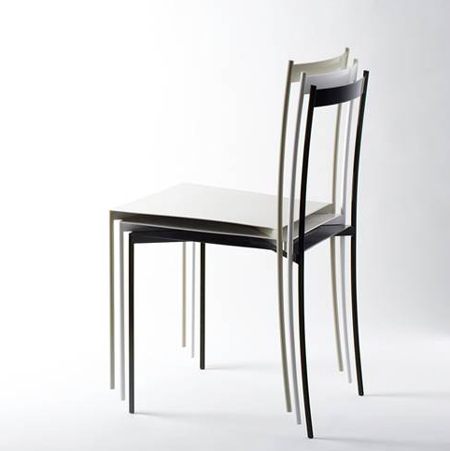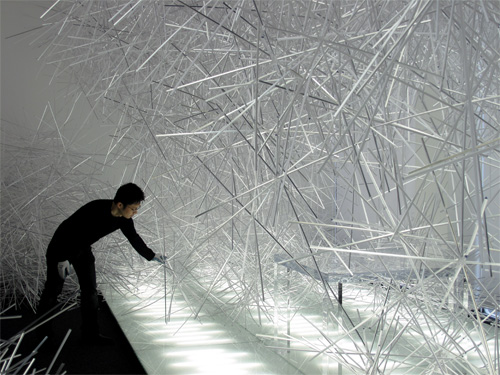This beautiful creation catches my eyes from the very first moment. This beauty is so light and yet able to sustain human weight .. for the obese - i'm not that sure .. Nevertheless, this baby is stackable and it really saves space, will fit perfectly in modern apartments that needed some air to breathe and some spaces to spare.
Read on..

Japanese design studio Nendo will exhibit “wire-chair” at Galleria Antonia Jannone during the Milan design week, starting on the 13th of April.
Here is the text from their press release:
“wire-chair” will be shown at the nendo’s private exhibition “chair garden” at Galleria Antonia Jannone.“wire-chair”
The next generation of the ‘cord-chair’, with its 15 mm diameter legs of stainless steel clad in a hyper-thin wood skin.
The wooden skin has been stripped away and the diameter of the steel rods increased from 9 to 12 mm, giving them the strength to support the chair independently of the wood. Multiple layers of powder coating and hand polishing give the chair a rare lustrous finish, reminiscent of traditional Japanese lacquerware.
The new finish also heightens the chair’s flexibility of use: the resulting durability and water resistance of the finish allow the wire chair to be used outdoors, and the colour selected. These modifications bring fresh charm to an already innovative chair.





































































